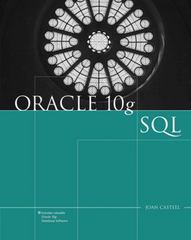Question
Given the date class interface below: class date { public: void setDate(int mm, int dd, int yyyy); // Postcondition : data object has been set
Given the date class interface below:
class date
{
public:
void setDate(int mm, int dd, int yyyy);
// Postcondition: data object has been set to the values passed to the function
int getMonth();
// "accessor function" or simply "accessor"
// Postcondition: month of the calling object is returned
int getDay();
// Postcondition: day of the calling object is returned
int getYear();
// Postcondition: year of the calling object is returned
int difference(date &d2);
// Postcondition: number of days between the calling date object and date object d2 passed to the function
int compareDates(date &d2);
// Comparing the calling date object and the date object d2 passed to the function
// Postcondition: returns 1, 0, and -1 if the calling object is earlier than, later than, or the same as the object d2, respectively
void inputDate();
// Prompts the user to enter three integer values for month, day, and year
// Postcondition: the calling object is filled with valus entered by the user
void displayDate();
// Postcondition: the contents of the calling object is displayed in mm/dd/yyyy format
private:
bool isLeapYear();
// A "helper" or "auxiliary" function called by public member function(s); not accessible from outside of the class
// Postcondition: returns true if the "year" of the calling object is a leap year; returns false otherwise
int month;
int day;
int year;
};
You are asked to
- implement all nine member functions of the above date class.
- Write a main() function to test all nine member functions directly or indirectly. Design your program output to make it clearly and easily readable to anyone who reads it. The output of a sample run tests most by not all member functions but you should test them all. Note that the isLeapYear() is indirectly called by the difference() function.
Note: If you have trouble with the coding of difference() member function, you may ignore the isLeapYear() member function and make a simple assumption that all twelve months contains 30 days.
Step by Step Solution
There are 3 Steps involved in it
Step: 1

Get Instant Access to Expert-Tailored Solutions
See step-by-step solutions with expert insights and AI powered tools for academic success
Step: 2

Step: 3

Ace Your Homework with AI
Get the answers you need in no time with our AI-driven, step-by-step assistance
Get Started


